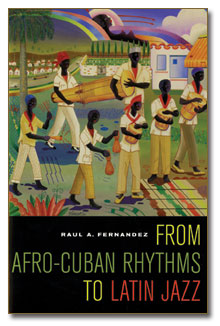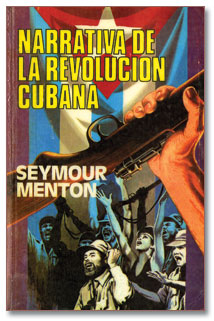
Our fall exhibit, California Universities Building Amistad: The UC-Cuba Initiative, which opened in Langson Library on November 15th, celebrates the founding of the UC-Cuba initiative and the leading role that several UCI faculty members have played in its development.
 UC-Cuba is a new multi-campus research unit (humwww.ucsc.edu:16080/uc-cuba/) that seeks to “bring together interested academics from all campuses to coordinate and develop UC-Cuba related academic activities.” Some initial objectives: intra-campus lecture tours by UC faculty and distinguished national scholars, a major biennial national UC Cuban conference, student workshops on Cuban topics, awards for Cuba-related research and travel, and aid to UC libraries in developing strong Cuban research collections. UCI’s exhibit will be followed by others at the libraries on the other campuses.
UC-Cuba is a new multi-campus research unit (humwww.ucsc.edu:16080/uc-cuba/) that seeks to “bring together interested academics from all campuses to coordinate and develop UC-Cuba related academic activities.” Some initial objectives: intra-campus lecture tours by UC faculty and distinguished national scholars, a major biennial national UC Cuban conference, student workshops on Cuban topics, awards for Cuba-related research and travel, and aid to UC libraries in developing strong Cuban research collections. UCI’s exhibit will be followed by others at the libraries on the other campuses.
The exhibit’s opening event will feature two UCI faculty members: Raul Fernández, Professor of Chicano/Latino Studies and Head of the UC-Cuba Initiative, and Ken Janda, Professor of Chemistry. Fernández will present an overview of the Initiative and Janda will speak about his work with scientists in Cuban universities.
Cuba enjoys a unique history in the Western Hemisphere. The island was a Spanish colony from 1493 until 1900, well after other Latin American nations achieved their independence. Slavery remained legal until 1886, long after most nations had abolished the heinous trade. Cuba became one of the world’s major sugar producers and is internationally renowned for its cigars.
 Geographic proximity to the United States has shaped Cuba’s destiny. In 1848 the U.S. unsuccessfully tried to purchase Cuba for $100 million. The sinking of the U.S.S. Maine in Havana harbor in 1898 led to war with Spain and U.S. occupation of the island. Until the 1959 Revolution, the United States was the dominant economic power in Cuba. Fidel Castro’s post-revolutionary government allied itself closely with the Soviet Union. This led the U.S. to impose an economic embargo on Cuba that continues today, as well as other attempts to bring down Castro’s government. In 1962 the world came to the brink of nuclear war during the Cuban Missile Crisis. The Revolution also created a mass exodus of Cubans seeking escape from the policies of the Castro government. Many of them settled in the U.S as political refugees. It is within the context of this highly strained relationship that U.S. academic research in and about Cuba takes place.
Geographic proximity to the United States has shaped Cuba’s destiny. In 1848 the U.S. unsuccessfully tried to purchase Cuba for $100 million. The sinking of the U.S.S. Maine in Havana harbor in 1898 led to war with Spain and U.S. occupation of the island. Until the 1959 Revolution, the United States was the dominant economic power in Cuba. Fidel Castro’s post-revolutionary government allied itself closely with the Soviet Union. This led the U.S. to impose an economic embargo on Cuba that continues today, as well as other attempts to bring down Castro’s government. In 1962 the world came to the brink of nuclear war during the Cuban Missile Crisis. The Revolution also created a mass exodus of Cubans seeking escape from the policies of the Castro government. Many of them settled in the U.S as political refugees. It is within the context of this highly strained relationship that U.S. academic research in and about Cuba takes place.
This exhibit showcases the UCI Libraries’ diverse resources supporting research on Cuba, highlighting our faculty’s research interests. Items are displayed in eight topical sections: pre- and post-Revolutionary Cuba, U.S.-Cuba relations, social sciences, visual arts, performing arts, literature, and artists’ books. The materials on exhibit are drawn from both the general collection and Special Collections and Archives. The exhibit was curated by Philip MacLeod, Research Librarian for Spanish & Portuguese and Latin American Studies.
For more information about the exhibit contact Phil MacLeod (pmacleod@uci.edu or x46548).
Message from the University Librarian: Globalism and the Libraries
Fall Exhibit: California Universities Building Amistad
Digital Images from the National Palace Museum
of Taipei
Contributors:
Jackie Dooley, Kristine Ferry, James Galbraith, Cynthia Johnson, Philip MacLeod, Gerald Munoff, José de Jesús Pérez, Ying Zhang
Editor: Jackie Dooley
Design & Production:
Julia Crosara